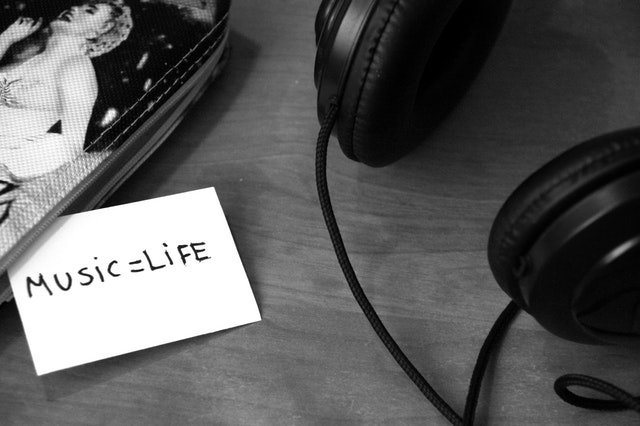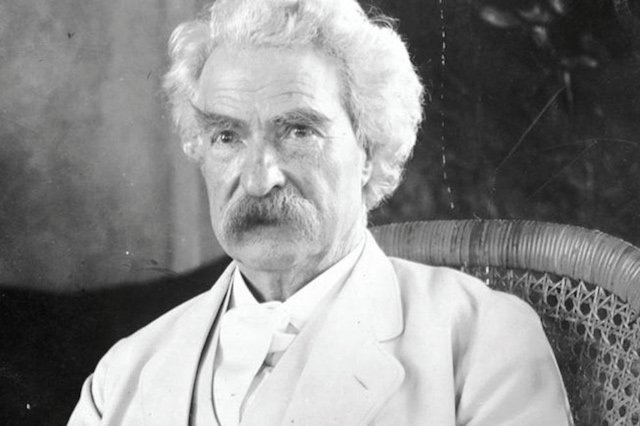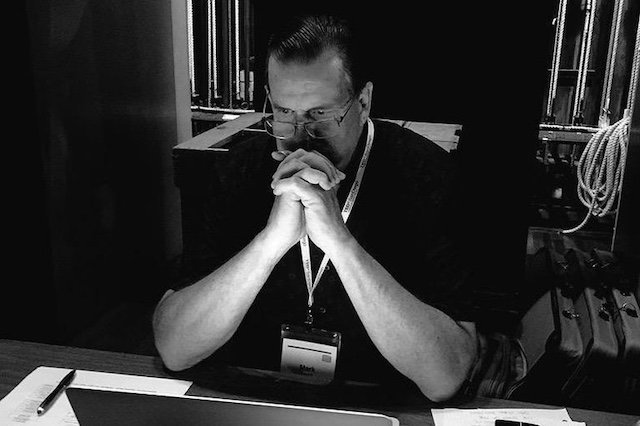David Litt on The Moth Mainstage at Royce Hall
The Moth has been hosting storytelling events for 20+ years, and the thousands of storytellers who have graced their stages are proof that every story is unique, and that the best stories come from our personal experiences.
In this story, as told by David Litt, we hear a humorous tale about what it’s like to work in the White House, and to finally meet the President of the United States.
The details of the experience, both the settings and the conversations, give us a sense of what it must have felt like to work in the White House. But in a normal context that we can all relate to, it is also about wanting to excel in your career, while also dealing with imposter syndrome. We’ve all made blunders in our life, and looking back they can be much funnier than they were in the moment. You may have a story about an event that didn’t work as planned, but in hindsight, makes you laugh.
Transcript
In 2008 I was one of those young people who became obsessed with Barack Obama. I was a senior in college at the time, and after I graduated I drove out to Ohio, and I worked on his campaign, and after the campaign I drove to Washington because – hope and change.
And two years later, the White House actually hired me. They hired me to write speeches. And people would hear about my new job and they would say, ‘wow, you must be really good’, and I’d say, ‘I don’t know, I hope so’. And they thought I was pretending to be humble but I was entirely sincere.
It’s not that I didn’t think I had any talent whatsoever, it’s just that I knew there are 300 million people in America, and some of them are babies, but a lot of them are adults, and it just seemed unlikely that I was the best ‘we the people’ could do. So everyday I walked through the gates of the White House absolutely sure somebody had made a mistake.
And while this was going on my friends and family were equally sure they now had direct access to the President of the United States. Like I’m sitting in my White House office, and I get a text from my sister Rebecca, and it says ‘how come the Department of Homeland Security doesn’t have a mailing address?’
Now even in the best of circumstances this is a disturbing question to get from a family member, but if you work in the White House you want to know the answer to this kind of stuff, and I have no idea, and it’s like this with everything.
I mean suddenly everyone has a law that only I can get through Congress. Everybody has something wrong with Obamacare that I need to know about. Mostly, everybody has the same question. They all want to know – have you met him yet, have you met Obama yet – and I say no, I haven’t met him yet, and I get this look, and it’s a look I soon learn means, you may be 24 years old and working at the White House, but you’re still a disappointment to your family and friends. And I have to say I totally get it.
I mean everybody thinks that the White House is either like the TV show The West Wing where everyone’s hanging out with the President, or it’s like the TV show Scandal, where everyone’s having sex with the President. But if you’re looking for a Hollywood analogy, the White House is like the Death Star. What I mean by that is just that there’s thousands of people, they run around the hallways, they’re all just trying to make sure their little bit of their job works well.
And just because Darth Vader is the public face of the organization it doesn’t mean that every stormtrooper gets personal one-on-one time. So I try to explain this whole Death Star thing, and it doesn’t work, I still get that disappointed look. And frankly, nobody’s more disappointed than I am. I mean, nobody wants me to meet the president more than me. And there’s two reasons for this.
The first is kind of corny, but it’s true. I moved to Washington because I thought, I don’t know what it is, but there must be something I can do for my country. I want to be the kind of person where the President of the United States is just a little bit better at his job because I’m in the room.
And the second reason is I would really like Barack Obama and I to become best friends. And now I’m not saying that every White House staffer imagined that they would become buddies with the president. I’m just saying that none of us ruled it out. Like you would hear these stories you know somebody got a fist bump in the hallway, or someone else got invited up to play cards on Air Force One. And the moral was always the same. Any moment could be the moment that changes your life forever.
Now my first chance at a life-changing moment came in November 2011 when I was asked to write the Thanksgiving video address. I will say up front, if state of the union is all the way on one end of the presidential speechwriting spectrum, happy Thanksgiving America is kinda on the other side.
But as far as I was concerned, this was the most important set of words Barack Obama would ever say, and so I threw myself into this. I mean, I wrote, and I rewrote, and I made edits, and then I made edits to the edits, and finally the day of the taping came.
And I went to the diplomatic room which is one of the most beautiful rooms in the White House. It has this wraparound mural of 19th century American life. And the advice I always got was, you have to act like you’ve been there before. So I’m standing there, trying to act like I’ve been there before, and the woman behind the camera takes one look at me and goes, ‘this is your first time here isn’t it’, and I crack immediately. I’m just like, ‘yes I have never been here before, please help me.’
And she says, ‘don’t worry.’ She explains her name is Hope Hall, she films the president all the time, she’s gonna take care of everything. All I have to do is wait. So I wait, and I wait, and I wait, and I wait. And just when I’m wondering is this whole thing a nightmare, is it a practical joke, somebody gets an email on their blackberry, and they say, ‘okay he’s moving’, and then there’s kind of a crackling in the air, and a minute later President Obama enters the room.
And he’s standing up, so we all stand up. And he sits down, so we all sit down. And he looks at the camera to start taping when Hope stops him, and she says, ‘actually, Mr. President this is David. This is the first video he’s ever written for you’, and President Obama looks at me, and he says, ‘Oh, how’s it going David?’
I had exactly one thought in that moment. I did not realize we were going to have to answer questions. And I have literally no idea what I said after that. I mean, I actually blacked out. Like I went home for Thanksgiving and my family was like, ‘so have you met him yet?’
And I was like, ‘yeah.’
And they were like, ‘what did he say.’
I was like ‘how’s it going?’
And they were like, ‘what did you say.’
And I was like, ‘I don’t know, I blacked out.’
And I get that disappointed look. And I can’t blame anybody, because if I’m gonna be the kind of person who makes the president a little bit better at his job when I’m in the room, I am going to have to deal with questions more complicated than how’s it going.
And at the moment there’s no indication that I can do it. But I make a promise to myself. I say, if I ever get another shot at a life-changing moment I am not gonna let myself down. And I didn’t know if it would ever happen for me, but in fact, it happened just a couple weeks later.
I was sitting in my office. I got a phone call from the chief speechwriter at the time, a guy named Jon Favreau, and he called me up, and he said ‘Betty White is turning 90 years old, and NBC is doing this special where different famous people wish her a happy birthday in these 30-second skits, and you’re pretty funny, and no one else wants to do it. Want to give it a shot?’
And I said, ‘absolutely.’ And again, I understand the State of the Union is over here, and happy birthday Betty White is over there, but this was my Gettysburg Address. And so we had one week to make it perfect.
We started off. John and I came up with a joke for the president. We were gonna have him fill out a birthday card, and then while he was filling it out you would hear his voice on a voiceover say, ‘Dear Betty ,you’re so young and full of life I can’t believe you’re turning 90. In fact, I don’t believe it. Please send a copy of your long-form birth certificate to 1600 Pennsylvania Avenue, Washington, DC.’
So we feel good about the joke ,but we still need a birthday card. So one day that week I go to CVS near the White House. It’s a half block away. I grab a birthday card that I think it’s gonna be pretty good. And then right when I’m about to leave, I realize we don’t actually need one birthday card, we need two identical birthday cards, because we have two different camera angles.
We don’t want anyone to know that the president has already written his birthday greeting. And I think, yes, this is how White House staffers are supposed to feel. I mean, I’ve saved the day. And so I walk back to that to that Hallmark rack and I get an identical card. And I ring it up, and I go back to my office, and I’m feeling really good.
And then the last thing we need, we need some way to end the video. And so what I come up with is, we’re gonna have the President put in headphones, and then he’ll listen to the theme song from the Golden Girls, which is Betty White’s most popular show.
So I find the perfect pair of headphones that go over the ear, they look great on camera, and I listen to the Golden Girls theme song on repeat just to get in the mood. And then finally, on Friday I get the call. Come on over. No here’s what they don’t tell you about having a meeting in the Oval Office.
When you have a meeting in the Oval Office, you do not just walk into the Oval Office. The first thing you do, you wait in this kind of windowless chamber. It’s a little like a doctor’s office, except instead of last year’s Marie Claire magazine, they have priceless pieces of American art.
And instead of a receptionist they have a man with a gun who in a worst case scenario is legally obligated to kill you. It turns out this little room is the perfect place to second-guess every life choice you have ever made. And so I’m sitting there with Hope Hall, the videographer, and I’m just thinking, do I remember how to explain the joke, are both of the birthday cards in there.
I check my pants pocket. Are the headphones still there. Are the headphones still there. Are the headphones still there. I’m on the verge of a nervous breakdown when finally one of the president’s aides pokes her head out and says, ‘okay he’s ready for you go on in.’ To my credit, the first time I entered the Oval Office, I do not black out.
I can remember this very clearly. Right in front of me, I can see a painting of the Statue of Liberty that was done by Norman Rockwell that someone has told me is valued at 12 million dollars. And behind me, out of the corner of my eye, I could see the Emancipation Proclamation. Not a photocopy of the Emancipation Proclamation. The Emancipation Proclamation.
And I can feel the message that this document is sending through the room. And that message is, ‘I’m here ’cause I freed the slaves, what are you doing here?’ And I look across the desk at the President, and I realize he may also be wondering what I’m doing here. But I feel great. I mean, I’ve spent an entire week just practicing how to explain this one joke to the President.
So I step up. I look at him. And I open my mouth. And what comes out is like I’m trying to ask for directions but in Spanish. Like the nouns and the verbs are there but there’s nothing in between them. I just say, ‘Betty White, video, NBC very funny, everybody laughs, está bien.’
And the President gives me kind of a confused look, and Hope, the videographer, jumps in and explains everything and rescues me, but I’m a little concerned, because I am here to show the President how professional I am, and in my professional opinion, we are not off to a great start.
Still, I’m not that worried, because I have that second birthday card in my pocket. And so I’m gonna get a chance to show President Obama how I saved the day. And as soon as Hope is finished filming, even I am surprised by how confident I sound when I walk up to the desk and I put my hand down and I say, Mr. President, I’m gonna need to take that birthday card and replace it with this identical birthday card because we don’t want anyone to know you’ve already written your birthday greeting.
And President Obama looks up at me and he says, ‘we’re filming this from all the way across the room?’
And I say, ‘yes, that’s right.’
And he says, ‘so no one’s gonna see the inside of the card.’
And I say, ‘yes, that’s right.’
And he says, ‘so I can just pretend to write in the card? We don’t actually need another one?’
And I say, ‘yes, that’s right.’
And I put the card back in my pocket, and it’s strike two. But I’m not giving up yet, because I made that promise to myself, and besides, I really do feel good about the the ending with the headphones. And so the moment Hope is done filming her second camera angle I walk back up to the President, and I reach into my pocket, and I pull out what looks like a hairball made out of wires.
I don’t really know what happened. I guess somewhere in that waiting room I have just worried this thing into a hopeless tangle. And now I don’t know what to do, so I just hand the entire thing to the President the United States. Now, if you work in the White House, you will hear the phrase, there is no commodity on earth more valuable than a President’s time. Which I always thought was a cliche, until, I watched Barack Obama, untangle headphones, for 30 seconds, while looking directly at me.
And he untangles and untangles, and when he finishes he looks at Hope and just goes, ‘shoddy advanced work.’ And he does it in this way that lets you know that A. he’s only joking, and B. he is not even a tiny bit joking. And I’ll tell you, my heart just sinks. I mean, this was my third chance to make a second first impression on the President, and I let myself down. And all I want to do is get out of there.
And President Obama says something like, well would it be funnier if I bob my head in time to the music. And I say, ‘yeah that would be funnier’, but my heart isn’t in it. I mean, I know I don’t belong there, and the president looks into the camera to tape this final scene, and then suddenly he stops, and he says, ‘well wait a second, if I’m going to bob my head in time to the music, I need to know how the music goes.’
Does anyone here know the Golden Girls theme song? And President Obama looks at Hope. And Hope doesn’t say anything. So I look at Hope, and Hope doesn’t say anything. So President Obama looks at me. And suddenly I know exactly what I can do for my country.
And so I’m standing there in the Oval Office, with the Emancipation Proclamation right behind them, and I look our commander-in-chief in the eye, and I say, ‘bump bump bump bump thank you for being a friend, bump bump bump bump travel down the road and back again, something, something, you’re a pal and a confidant bump bump bump.’ But he looks kind of amused, so I keep going. So I’m like, ‘if you threw a party invited everyone you knew’, and that’s when he gives me a look that’s like okay, President’s time.
But it works.’ President Obama bobs his head in time to the music and Betty White gets her card, and NBC gets their special, and I leave the Oval Office that day with my head held high knowing that the President of the United States was just a tiny bit better at his job because I was in the room.
And people still ask me after that, they still say, have you met him yet, have you met Obama yet?’ And I can finally say, ‘yeah actually I have’, and then just to myself I think, not to brag or anything, but technically, I’m thankful he’s a friend.
Thank you very much.
[Note: all comments are my opinions, not those of the speaker, or The Moth or anyone else on the planet. In my view, every story is unique, as is every interpretation of that story. The sole purpose of these posts is to inspire storytellers to become better storylisteners and to think about how their stories can become more impactful.]
contact me to discuss your storytelling goals!
◆
Subscribe to our newsletter for the latest updates!
Copyright Storytelling with Impact – All rights reserved




